Mount Kilimanjaro Wildlife Pictures
What animals live on Kilimanjaro and where can you see them?
Kilimanjaro wildlife is elusive. Yes, wildlife does live on Mount Kilimanjaro, especially in the forests that cover the lower slopes. But spotting animals on Kilimanjaro is not as easy as you might think.
If you want one of those classic pictures with elephant or giraffe in front of Kibo peak, then you better book a safari in Amboseli National Park in Kenya, not a Kilimanjaro climb in Tanzania.
Mind you, Amboseli lies at the foot of Mount Kilimanjaro, towards the north. If you climb Kilimanjaro on the Rongai route you may get lucky, as on rare occasions some of the wildlife does venture up Kilimanjaro.
But if you want to climb a mountain and see lots of wildlife, go and climb Mt. Meru in Arusha National Park (not far from Kilimanjaro National Park).
On the slopes of Mt. Meru you are guaranteed to see giraffe, warthog and water buffalo, colobus monkeys, blue monkeys, bush buck and dik dik, many, many birds... With a bit of luck even elephants or hyaenas. You are accompanied by an armed ranger, because even though leopards are notoriously hard to see, on Mt. Meru there is the very real possibility to meet one!
And wildlife on Kilimanjaro? Well, eland and African hunting dogs are amongst the most exciting creatures that have been spotted - once or twice. A frozen leopard was found in 1926 and there have been two more sightings since. I guess it is not toally impossible that one day someone might see one again, but don't hold your breath.
Kilimanjaro is totally overrun with people, and as a rule animals like to hang out where people don't.
Let's be realistic and first look at some pictures of the Kilimanjaro wildlife that you CAN expect to see:
Kilimanjaro Wildlife Pictures 1-3: Monkeys
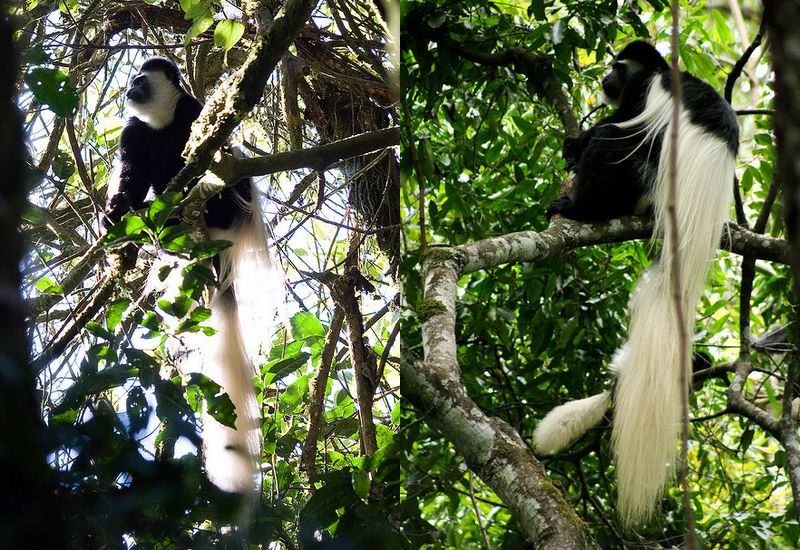 Colobus monkeys, by Stig Nygaard, Demetrius John Kessy
Colobus monkeys, by Stig Nygaard, Demetrius John Kessy
Just look at that tail... Black and white colobus monkeys are really good looking monkeys, spectacular even. They are comparatively shy companions, but you do have a very good chance of spotting them in the forest above the Mandara Huts (Marangu route) and at the start of the Lemosho/Shira and the Rongai route.
(Getting close enough to them to get a good photo, especially in the challenging light of the dense rainforest, that's a different issue. )
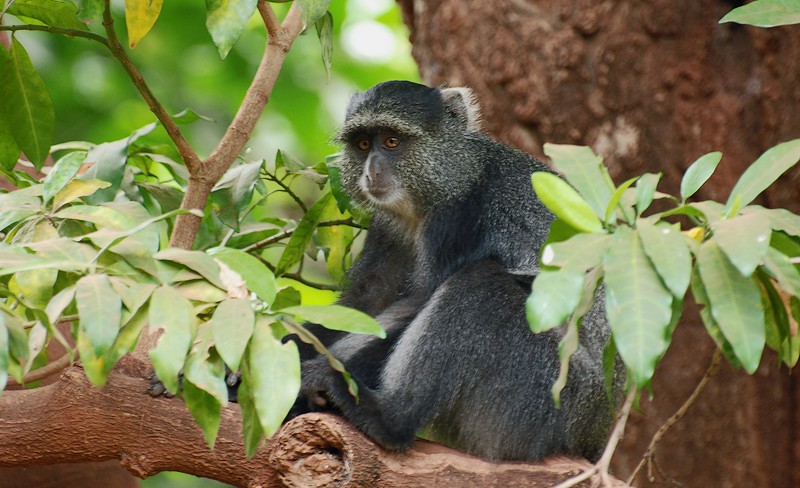 Blue Monkey in Tanzania, picture by Harvey Barrison.
Blue Monkey in Tanzania, picture by Harvey Barrison.
As you can see, blue monkeys are by no means blue... These fellows are fairly common and not worried about people at all. A big number of them hang out around the Mandara Huts on the Marangu route. That's why they call the patch of forest above the Mandara Huts the monkey forest.
Well, and that is probably the most impressive Kilimanjaro wildlife you will come across. Unless you get excited by the mice that live at the Horombo Huts... (They are four-striped grass mice and don't mind sharing their living space with humans.)
Beyond that there are small lizards (of which I currently don't have any photos) and then there are the birds...
Kilimanjaro Animal Pictures 4-8: Birds
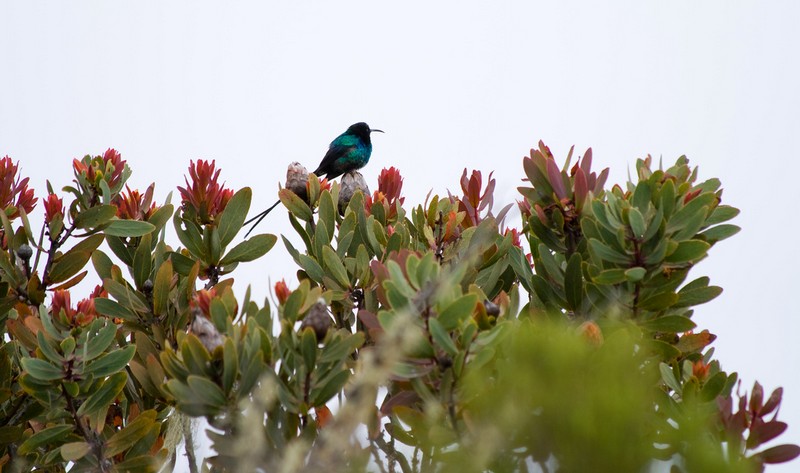 Malachite sunbird on a protea flower, animals of Kilimanjaro, photo by Stig Nygaard.
Malachite sunbird on a protea flower, animals of Kilimanjaro, photo by Stig Nygaard.
This is a male malachite sunbird. The plainer female is shown in the photo below.
Get a guide to point out their voice to you, and you will often hear them before you see them. Sunbirds are plentiful on Kilimanjaro, in all areas where lobelias and proteas grow, which is the heath and moorland.
A particular good place to see them is the Karanga Valley, which you will cross if you climb on the Lemosho, Shira or Machame Route.
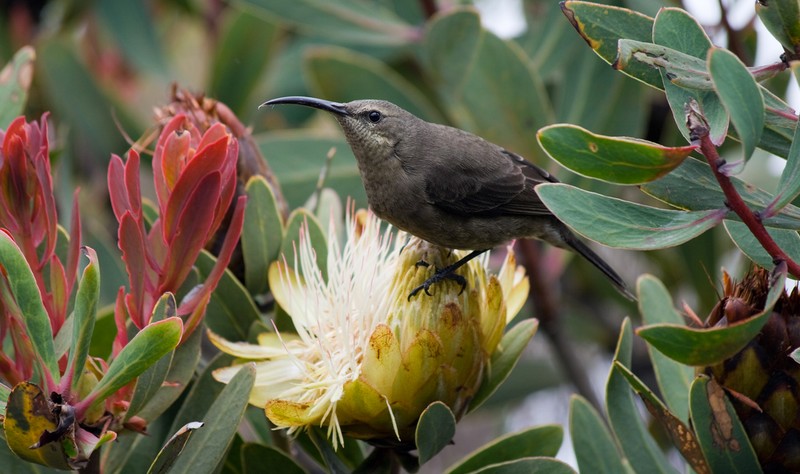 The plainer female sunbird, also on a protea flower, Kilimanjaro wildlife photo by Stig Nygaard.
The plainer female sunbird, also on a protea flower, Kilimanjaro wildlife photo by Stig Nygaard.
The photo below shows a variable sunbird. You may spot those on Mt. Meru or maybe on safari in Tanzania, but unfortunately not on Kilimanjaro.
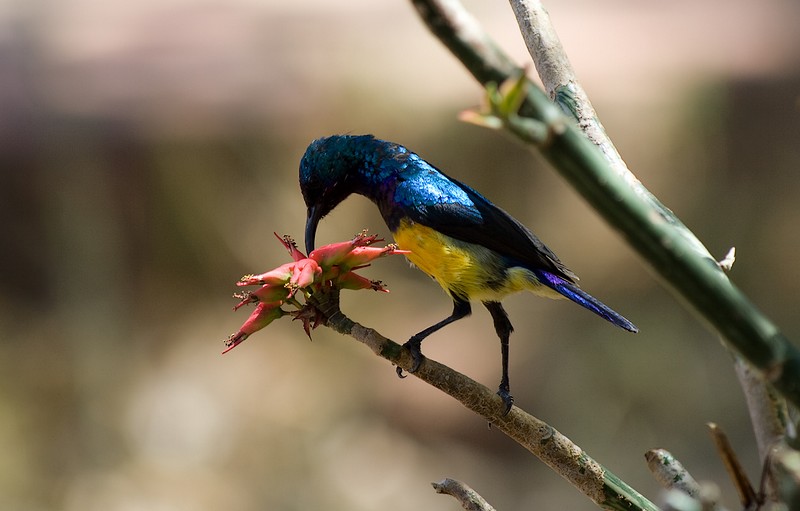 Variable Sunbird, photo by Stig Nygaard.
Variable Sunbird, photo by Stig Nygaard.
The silvery-cheeked hornbill is a rather large bird that lives in the forest, but also around houses and plantations. (It likes to eat fruit.) You may see them on Kilimanjaro, but you may also see them on the grounds of your hotel like we did.
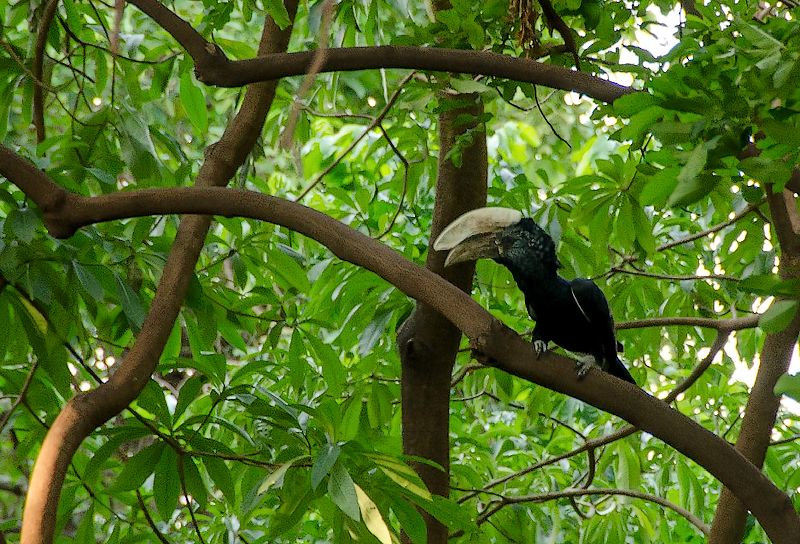 The Silvery-cheeked Hornbill, Kilimanjaro animals, photo by Colin J. McMechan.
The Silvery-cheeked Hornbill, Kilimanjaro animals, photo by Colin J. McMechan.
White-necked ravens are big birds with large, strong, scary looking beaks. They hang around the campsites and huts on Kilimanjaro (and Mt. Meru), scavenging and hoping for scraps.
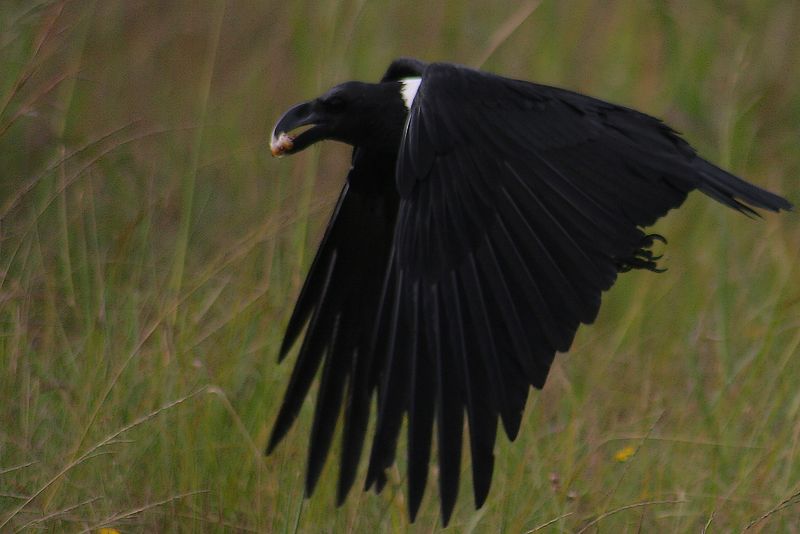 White-necked Raven, Kilimanjaro wildlife photo by MBoy68.
White-necked Raven, Kilimanjaro wildlife photo by MBoy68.
What it takes to climb Kilimanjaro
More Mount Kilimanjaro photos: the Gallery
Do you need help with all this?
Would you like to contact a responsible and trustworthy tour operator with competitive prices?
Get some free, no obligations advice on route selection, duration and timing?
I regularly receive emails asking me if there is a tour operator I personally can recommend.
There is and you can contact my preferred operator through this page.